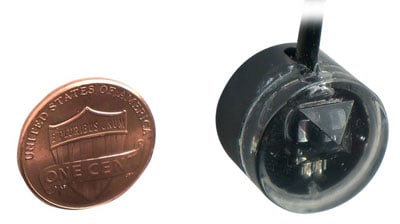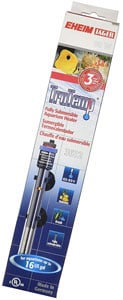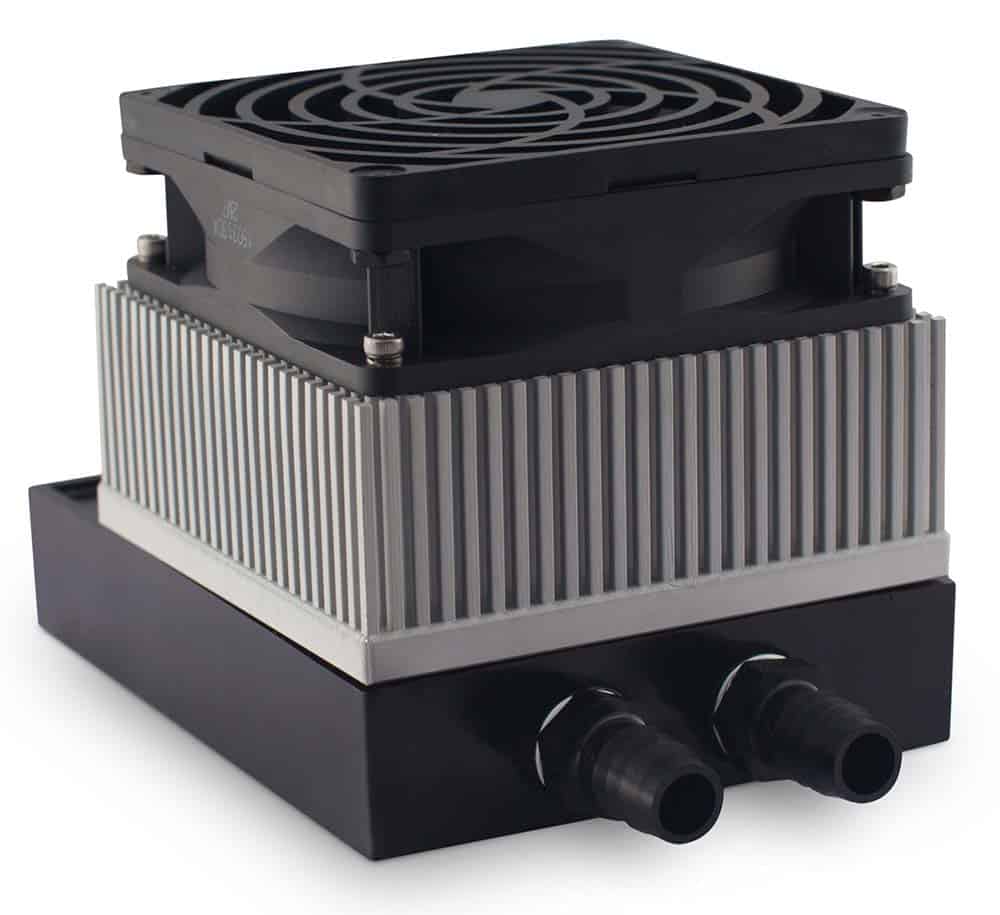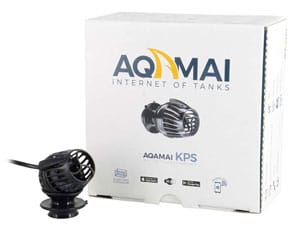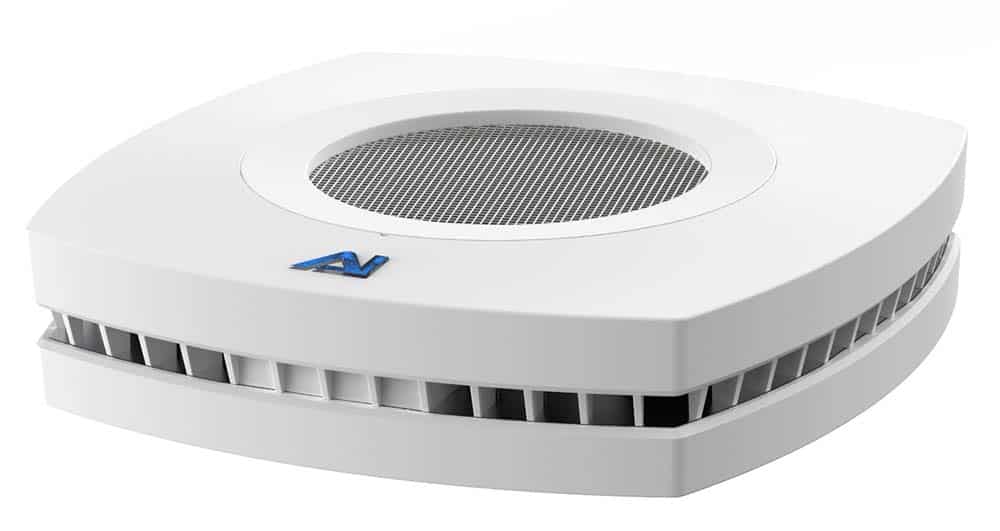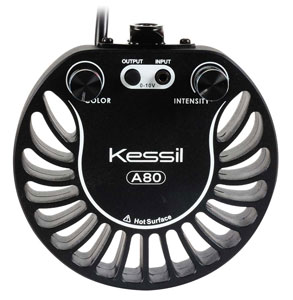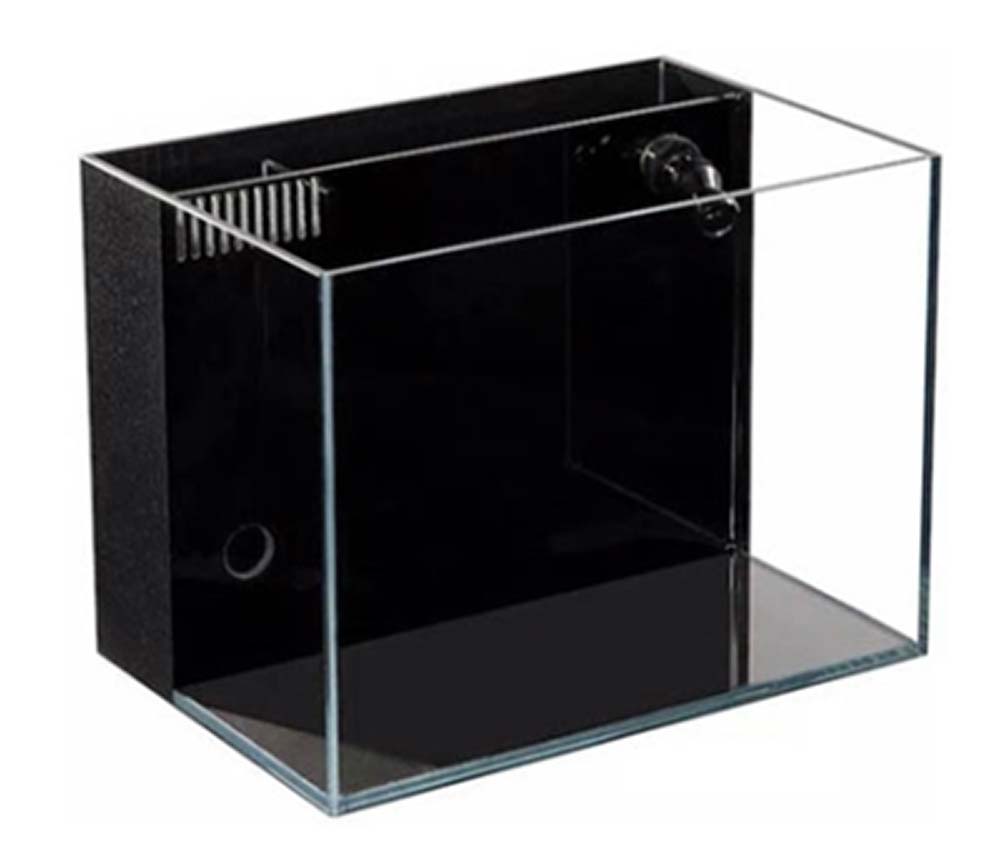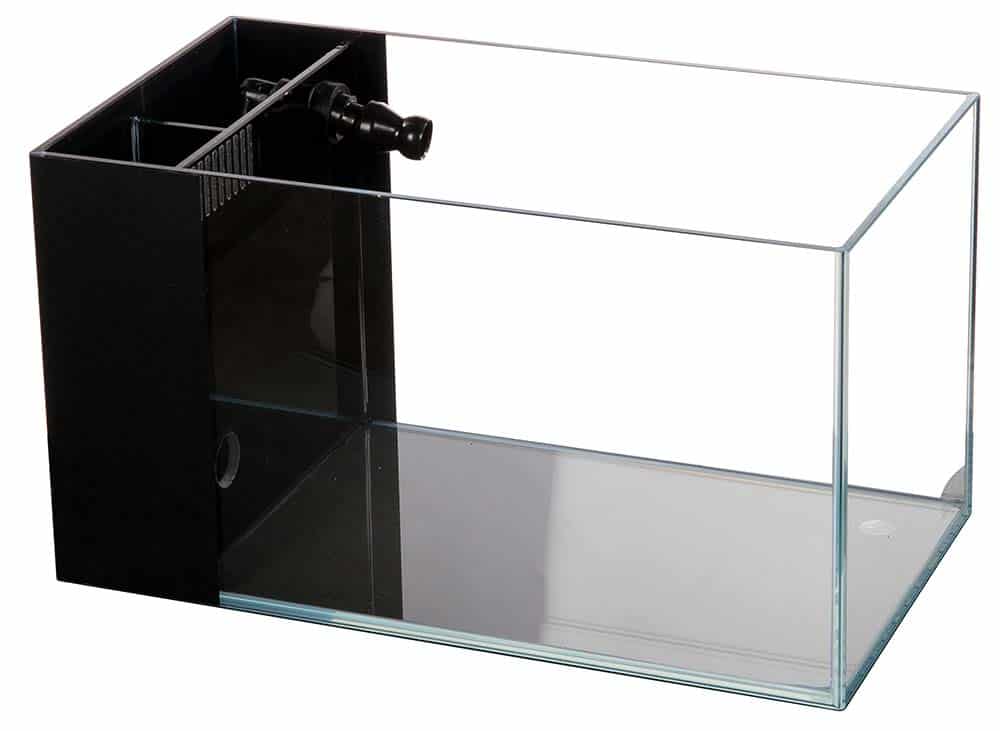You may have heard of a fairly new trend of saltwater tanks called Pico reef tanks, but are not too sure what they are? Pico reef tanks are a ‘fun-sized’ reef aquarium and are great if you want to place a ‘mini ocean’ in your office or apartment. They are not for the faint-hearted, but carefully looked after, can make an incredible ‘Desk Pet’!
Pico Reef Tanks are small saltwater aquariums under 5 gallons consisting of coral, invertebrates, and small fish. Regular maintenance is required to maintain water stability as the small volume of water is very susceptible to parameter fluctuations. Preferably for seasoned saltwater aquarists.
Although these aquariums look cute, I do not advise beginners to saltwater to attempt setting up a pico reef. Their small size makes them very susceptible to changes in their water parameters and the livestock added will need very careful selection to ensure success!
More experienced aquarium hobbyists are venturing into the world of buying pico reef tanks and whether you are after your second or even third tank, these tanks are a fun challenge. If you are not convinced yet, I guarantee after you read this article, you will be searching for them on the web!
What is a Pico Reef Tank?
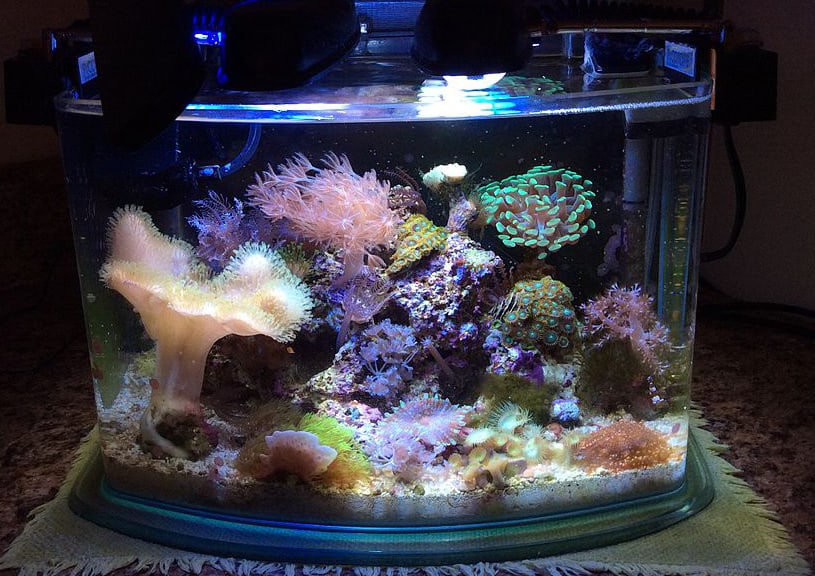
Pico reef tanks are the smallest reef aquarium you can get. They require a lot of patience and ‘top-class’ husbandry care because of their small water volume.
As pico reef tanks only hold 5 gallons of water or less, they require greater maintenance attention than larger aquariums, but the maintenance time is very minimal. Because of their size, it is not recommended to place larger fish into the aquarium, but something from the goby family is a great choice if you wish to put any fish in there.
Most hobbyists that have successful pico reef tanks usually opt for just hardy coral and small invertebrates such as shrimp, crabs, and snails. The most important ‘take-home’ message to anyone thinking about purchasing a pico reef tank is to not overstock it!
Water changes are advised every couple of days to control the ammonia, pH and salinity levels, as the water volume is so small. Careful monitoring of evaporation is required due to the possible rapid swing in salinity if left without corrective action. Depending on the tank you are looking to install, a micro Automatic Top Off system may be easily installed to automate this task.
Before these tiny tanks started to become known, it was thought it was impossible to house coral reefs in such a small body of water, however, aquarium hobbyists rose to the challenge and have proven this wrong!
With the dedication and complications that can occur with keeping a pico reef tank, they are not recommended for beginners, but if you have a little experience and are up for a challenge, then why not?
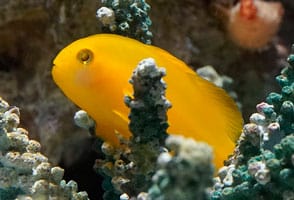
Let us take a look at the pros and cons of setting up your pico reef tank.
Pros:
- Water changes are much cheaper – they use less salt mix than their larger aquarium counterparts
- Running smaller equipment will save money initial purchase and electricity costs
- You will not need to rearrange your room to fit it in!
- You can choose the shape and size you want, be as creative as you like – Even Mason Jars have been used!
- They are extremely cheap to set up if you are re-using equipment
Cons:
- Water changes done one or two times a week will be required
- You are limited to only keeping corals, invertebrates, and very small fish as the tank will not be able to cope with the bio-load of larger organisms
- Water conditions can change quickly due to the small volume
- Water parameter tests will need to be done regularly to monitor water stability
- The small size of the tank can make hiding filtration and life support difficult
Required Pico Reef Equipment
No matter what size saltwater aquarium you plan to install there are some basic essentials that will be required to keep the water stable and the livestock healthy:
Tank
For the tank, I recommend a Pico AIO (All-In-One) aquarium. The main reason for this is that the AIO’s have all the filtration hiding away in a compartment at the rear of the tank. This allows for the beauty of the aquarium to be front and center without the distraction of equipment being seen.
Saltwater
You can’t have a saltwater aquarium without salt! Using a high-quality brand like any of THESE from Amazon.com will ensure the aquarium is off to a solid start. Making a new batch of saltwater for a pico aquarium is so simple as the amount you need to change each week can be done in a measuring jug!
Ensure the aquarium is topped off daily with freshwater to replace the water lost to evaporation will keep the salinity level constant.
To help with this chore, many Pico owners set up an inconspicuous vase next to the aquarium that acts as a freshwater reservoir and installs a tiny ATO (Automatic Top-Off) system to automatically replace the evaporated water
The AutoAqua Smart ATO at Amazon.com is perfect for this task as its tiny form allows it to be hidden out of sight, yet perform a very helpful task!
Live Rock & Live Sand
Because space is at a premium in a pico reef, providing the maximum surface area for bacteria to colonize to form the biological filter is paramount. One of the best ways to provide a solid filtration foundation is to use Live Sand and Live Rock.
These two products come straight from the ocean or harvest facilities and are teeming with beneficial bacteria to get the tank started. As the tank matures these two items will play a major role in the long-term success of the tank.
Using small pieces of Live Rock rubble, the owner can create some impressive aquascapes for the tank, even though it is a small area to work with. I’m sure you have seen some of the incredible work that model makers can create! A Pico Reef is no different!
You can find a great selection of Live Sand Here at Amazon.com.
Temperature Control
Maintaining a constant temperature in a pico reef is one of the most challenging without a little help. The volume of water is so small it can be easily affected by the surrounding room temperature and temperature swings can happen fast. This is the usual culprit to the failure of so many pico reefs!
Depending on where your pico tank is going to be kept you may need to keep the water from getting too cold or prevent it from getting too warm. Luckily for us, there are two great devices that can help us achieve a rock-solid water temperature:
Heater – Digitally controlled, a heater will come on and off as needed to prevent the water from getting too cold. Just sit it in the tank or filtration compartment, set it to 78°F-80°F, and leave it to do its thing.
For a small Pico Reef, you will not want a heater any larger than 50 watts.
The only heaters I have ever used is the Jager TruTemp range from Eheim.
You can find the 25W & 50W versions Here at Amazon.com
Chiller – On the other hand, if you live in a warm climate you may need to prevent the water from constantly getting too hot as the day progresses. To do this you can install a great little device, designed purposely for Pico & Nano aquariums that you can discreetly hide at the back of the tank.
You can find out more on the Chill Solutions CSX-1 Thermoelectric chiller Here at Chill Solutions.com
Water Movement
Micro Wavemaker – For those that want programmable flow control, varying flow rates, and patterns then this micro DC-controlled wave maker from Aqamai is the greatest choice for small tanks. Its small form factor allows it to be positioned anywhere while remaining unobtrusive.
You can find the Aqamai Wavemakers Here at Amazon.com
Lighting
If you plan on keeping corals in your reef then a capable, but sleek light will be required. The LED lights on the market solve this with many great options available to suit both your budget and your style.
Two of the most popular LED lights used on most pico and nano aquariums are the:
- Prime 16HD from AquaIllumination
- A80 from Kessil
(Links to Amazon.com)
Both are controllable and give great color and coral growth, but my preference is the Prime HD as it has all the interface and control built into it via WiFi, whereas the A80 needs an additional controller for setting varying light programs.
Both light systems come with multiple mounting options to allow you to find the best system to suit your setup.
How to Choose the Right Pico Reef Tank?
Now, this is the fun part! You can be super adventurous as hobbyists are known to use betta tanks, glass bowls, and even condiment jars as a pico reef tank.
You may already have a full setup at home just from spare parts lying around. Setting up a pico tank is simple and straightforward but let’s take a look at some of the beautiful, purpose-made pico reef tanks on the market.
Lifeguard Aquatics 4.1 Gal AIO Pico Tank
This 4.1 gallon All-In-One setup is a perfect pico reef! It comes with a return pump, filter media & ultra-clear, low-iron glass.
This small 12″ x 9″ x 9″ tank is perfect for sitting on a desk, kitchen counter or childs bedroom table.
You can find out more information and reviews about it Here at Amazon.com
Lifeguard Aquatics 3.8 Gal AIO Peninsula Pico Tank
For those of you wanting a different style of pico tank this peninsula style aquarium, also from Lifeguard Aquatics is a nice option.
Giving longer viewing panels this size of tank allows you great aquascaping freedom.
14″ x 8″ x 8″
You can find out more information and reviews about it Here at Amazon.com
What Animals Can Live in a Pico Reef Tank?
Adding things into a tank can be overwhelming but it is most certainly the most exciting part. Here are some super-awesome critters that are suitable to add to a pico reef tank!
- Nassarius Snails
- Neon Blue Goby
- Yellow or Green Clown Goby
- Sexy Anemone Shrimp
- Peppermint Shimp
- Scarlet Reef Hermit Crab
- Spotted Coral Croucher Goby
Also, what reef tank wouldn’t be complete without a colorful array of corals! Here are my top 5 corals that are perfect for a pico reef tank:
- Zoanthids & Palythoas
- Ricordia & Yuma
- Mushroom Corals
- Green Star Polyps
- Feather Dusters
- Frogspawn & Hammers
To Finish
Pico reef tanks are challenging, but look amazing if they are done correctly. If you do choose to have a pico reef tank, make sure not to overload with livestock otherwise you will have too much waste for the filtration to handle. Remember to test frequently and do not over supplement the water.
If you want to keep a large number of fish in your tank, or you like to take extended holidays…maybe a pico reef tank is not for you. An upgrade to a nano tank may be a better option.
However, if you have a bit of time to dedicate every day or so, understand the space limitations of the tank, and are a patient person willing to learn something new then take a dive into these miniature aquascapes!
Further Reading
To help you further in your learning and decision, you may find our following articles helpful:

